The Illuminated Landscape
There is an eternal romance between light and color that bathes the landscapes, where the voidsand volumes play with the magic of the rays of light that affect the surfaces and explode in colors and textures that give life to the space.
The growing development of the world of lighting, both in its technical and design possibilities, has consolidated this specialty in a specific subject of study and research.
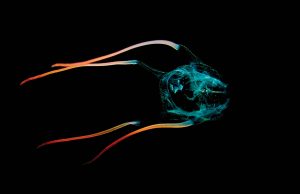
Photography: Will Turner on Unsplash
Light is a fundamental element in the life of man and the landscape that surrounds it: it marks the temporal cycles, allows the development of the vital processes of living beings, and invites us to appreciate with clarity the details of our environment.
This changing and continuous element (the light of the sun when it is daytime and that of the moon when it is night) has highlighted the importance of using artificial lighting to emphasize the vocation of a landscape and to reaffirm its meaning.
The capabilities achieved today by the lighting technology have made lighting design a determining exercise in the perception of spaces and shapes, valuing the landscape ((especially during dusk).

Thus, the management of light has become an integral complement to the landscape that allows us to perceive nature when it apparently sleeps, generating different readings of the landscapes we observe.
The depths of the sea or very dense forests for example, were impossible to see by the human eye until recent times, and have been able to be “discovered” and studied thanks to new lighting techniques.
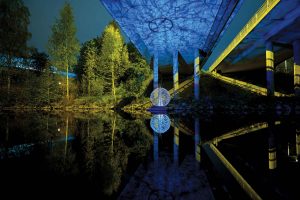
Photography: Tommi Saltiola on Unsplash
Light can shape space and make it notice in different ways. It can give depths or generate limits, highlight its most valuable elements and allow us to appreciate a space harmoniously during the night. It can also reveal the virtuality of the landscape, blurring reality, or even transforming itself into a message through illuminated images.
Without a doubt, landscape and its lighting influence our mood. A lake illuminated by the moon does not remind us as much as by the summer sun, nor a mountain under a winter blizzard that in broad daylight. At night, the lighting effect allows us to bring our gaze to a different world, where each element of the landscape can acquire an air of mystery, joy, solemnity, quietness or mobility.
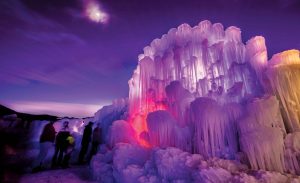
The Midway, Utah Ice Castle features an amazing light show set to music at night.
Photography: http://www.prweb.com/releases/2016/01/prweb13147015.htm
Therefore, for landscapes you should always find the best light, the most appropriate to portray its essence and personality; to convey its greatness or simplicity, to highlight its qualities and highlight its characteristics, to make the traveler fall in love and even to become an emblem or send a message to society (as is the case of large skyscrapers or natural elements that light up with the colors of the flag of multiple countries as a sign of solidarity, congratulations or support in different cities of the world).
The confluence between geography, meteorological phenomena and light are the elements that must be considered in order to create an adequate image of the landscape, since its correct perception depends on its coincidence and harmony.
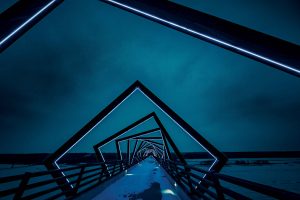
Photography: Tony Webster on Unsplash
Just as the most outstanding painters have known how to “illuminate” the scenes in their paintings, landscape architects are increasingly obliged to capture the essence of light and to provide landscapes with lighting that allows them to live at night and stand out in the dark.
In a world saturated with images and movement, the plasticity of the landscape is something that should move the observer, causing sensations and emotions that transcend a mere descriptive recreation of a more or less beautiful place.
An appropriately used lighting can and should represent a nature with its own personality, turning the landscape into a character capable of telling its story and inviting us to share it.
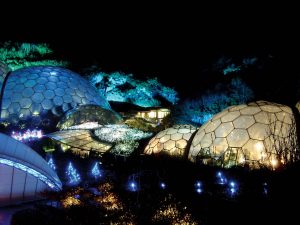
Eden Project Winter 2008 showing Bruce Munro Field of Light. Cornwall, United Kingdom.
Photography: Zero1752 at English Wikipedia, CC BY 3.0, https://commons.wikimedia.org/w/index.php?curid=56192979
The illumination of landscapes must resort to light to establish the days and times when their designs will be best read, their colors will be highlighted and their textures will be emphasized.
Therefore, the landscape lighting designer must have a way of looking and feeling the same as that demanded by nature and architecture: a look that discovers every detail of the space to be illuminated in order to highlight it, which allows observing the game between the volumes and the textures that caress the surfaces.
Study the circulations that are intertwined and understand that the lighting is “one” with the landscape, which should help to perceive and live a space generating sensations that fill the senses.
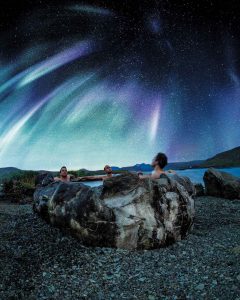
Photography: Luke Tanis on Unsplash
We can affirm that through the incidence of light, all landscapes (both natural and urban) acquire a unique and characteristic sense of vitality that is intrinsically linked to their connection with the immediate site and with those who live and contemplate it.
The possibility of highlighting that vocation that each place has to move us and appropriate them is what makes this relatively new discipline fundamental and should be valued and applied as an integral part of landscape design.
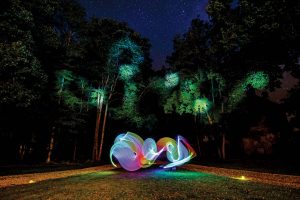
Photography: Guillaume de Germain on Unsplash
Thus, thanks to the light, you can create true natural works of art that allow us to appreciate the landscapes in a totally different way.
Lights and shadows, in their constant and perpetual struggle, unveil the personality of the landscapes. Without altering them, we must take advantage of the possibilities offered by the lighting to make them visible at night and appreciate those spaces and their worlds apparently asleep.








